Day four (Tuesday 7th November 2017) commenced with a cup of coffee and some toast on the balcony of our accomodation at Golden Beach. It was a warm day and thankfully the wind had dropped somewhat. Whilst I enjoyed my coffee I enjoyed watching the birdlife (of the feathered kind), including Wattlebirds and Rosellas.
After breakfast Marija and I headed down Shoreline Drive and had a look at the wreck of the Trinculo. The iron barque Trinculo, built in 1858 was travelling from Albany in Western Australia to Newcastle in New South Wales in May 1879. On 30th May 1879, the vessel was struck by S/E force 11 winds off WIlsons Promontory and was forced on to a sandbar 15 metres offshore at Stockyard Hill on the 90 Mile Beach. Fortunately no lives were lost as a result.
Today, very little remains of the wreck. Looking at photos from even 3-4 years ago, the wreck has diminished significantly due to the elements.
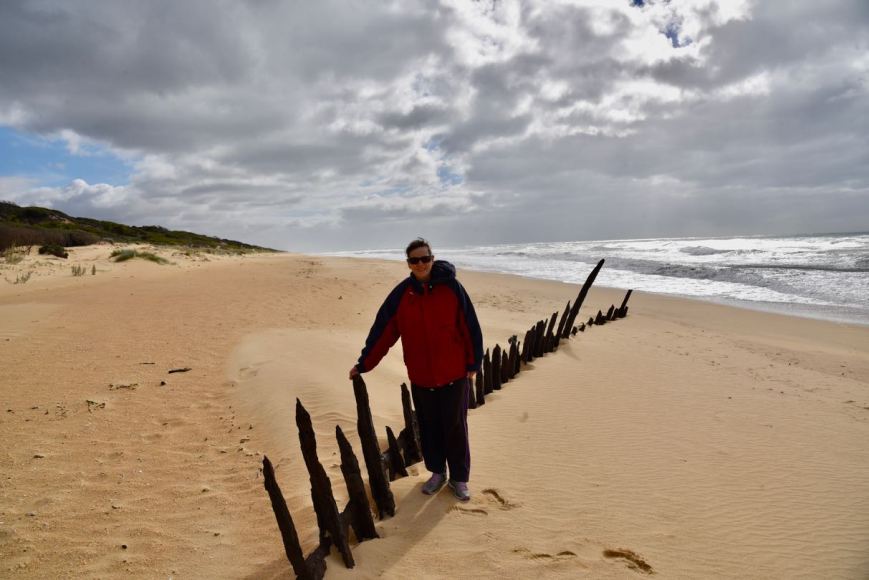
I then took some time out for a little bit of birdwatching in the scrub adjacent to the wreck. This is all part of the Gippsland Lakes Coastal Park VKFF-0747. Unfortunately my photographic skills were not good enough to catch many of the very small birds in the scrub.
We needed to refuel with diesel and we were warned about filling up at Golden Beach, so we chose to drove to Sale about 41 km away. And I’m pleased we did. Because we ended up going on a boat cruise out of Sale on the Rubeena, an old wooden boat first launched in 1912 at Lakes Entrance.
Here is a short video on the Rubeena Heritage cruise.
We took a 2 hour cruise along the Sale Canal and the Thomson River. We were fortunate to see a number of Sacred Kingfishers on the cruise, along with a majestic Wedge Tailed Eagle sitting high atop one of the gum trees above the water, and a variety of other birds.
We also spotted a koala or two, enjoying a morning sleep, a number of people fishing (for carp), and a number of aboriginal canoe trees.
The trip took us to the Sale Swing Bridge, designed by John Grainger and built in 1883 by the Victorian Government. It was the first moveable bridge built in Victoria. Its wrought-iron structure, 45 metres long, pivots on cylindrical steel columns
At the conclusion of the cruise, which we highly recommend, we drove down to the Swing bridge for a closer look and take a walk across it. The bridge is certainly very impressive.
After refuelling we headed back towards Golden Beach and took the Longford-Loch Sport Road towards the Gippsland Lakes Coastal Park VKFF-0747, our first activation for day 4.
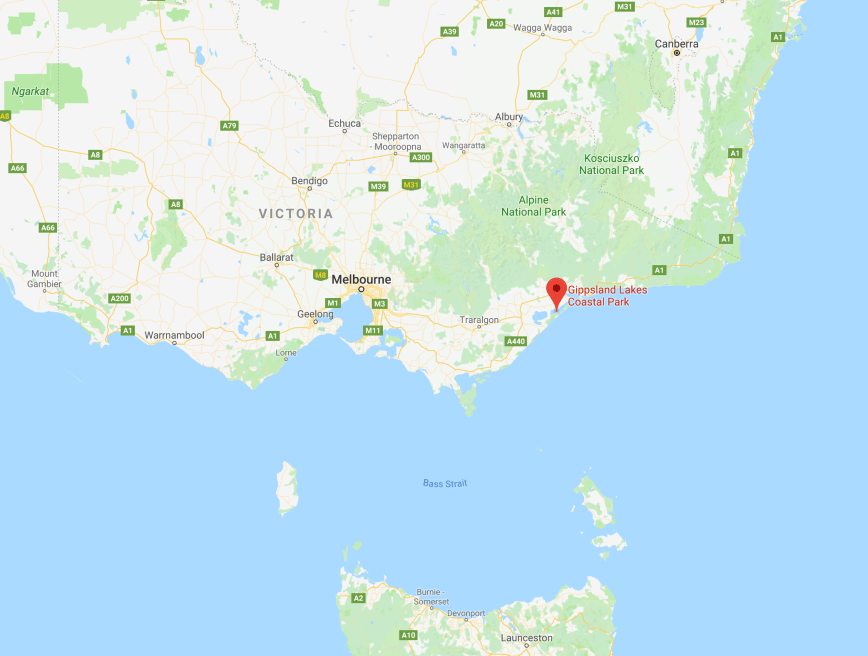
Above:- Map showing the location of the Gippsland Lakes Coastal Park. Map courtesy of google maps
The park is a narrow coastal reserve covering 17,600 hectares along a portion of the Ninety Mile Beach, from Seaspray to Lakes Entrance. The park consists of a system of coastal lagoons separated from the Tasman Sea by the coastal dunes.
On Friday 22 October 2010 both the Australian Federal and Victorian State governments formally recognised the Gunaikurnai people as the Traditional Owners of over 20 per cent of public land within Gippsland and Eastern Victoria. The Victorian Government and the Gunaikurnai people formally signed Victoria’s first settlement agreement under the new Traditional Owner Settlement Act 2010. This agreement involved the transfer of ten parks and reserves to the Gunaikurnai as “Aboriginal Title” which will be jointly managed in conjunction with Parks Victoria. Gippsland Lakes Coastal Park is one of the jointly managed parks within Gippsland.
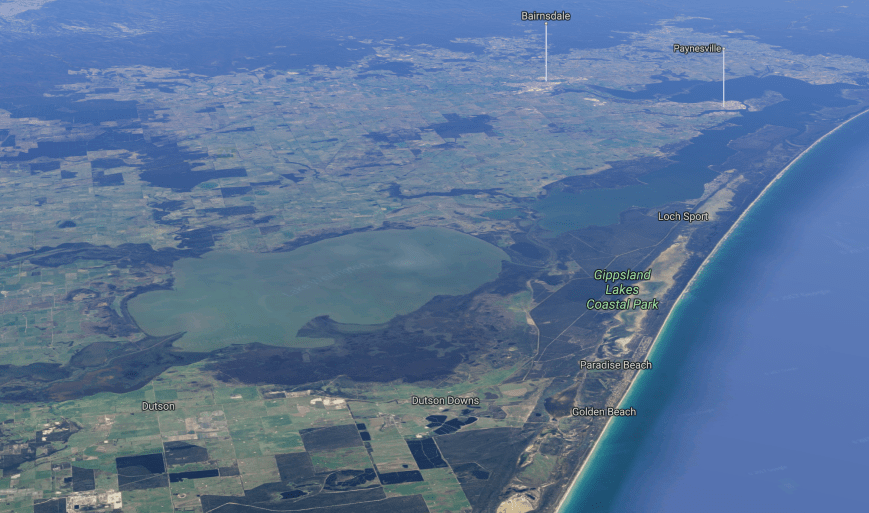
Above:- Aerial view of the park. Image courtesy of google maps
The first European records of the Gippsland Lakes were by Angus McMillan in 1840 and of the seaward entrance to the lakes by John Reeve in 1842. The entrance to the Gippsland Lakes was constructed in the 1880s. Before that time, the lakes were generally closed to the sea, with the barrier being breached only on rare occasions.
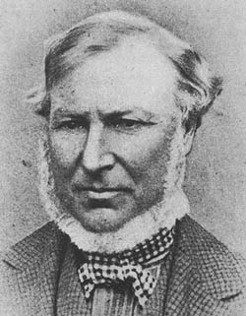
Above:- Angus McMillan, c/o wikipedia
Various native animals can be found in the park including Eastern Grey kangaroos, Black Wallabies, Common Brush-tailed Possums, Echidnas, and Ring-tailed Possums. Numerous native birds call the park home including Fairy Terms, Little Terns, Bar-tailed Godwit, Yellow-tailed Black cockatoo, Eastern Yellow Robin, and Wedge-tailed eagle.
The plants growing in the park can be divided into three main types: coastal, swamp and heathy woodland. These grow mostly on leached sand of low fertility. Coastal vegetation growing along the seaward side of the dunes is adapted to grow in harsh conditions of wind, salt, sun, shifting sand, little water and few nutrients. These plants include Hairy Spinifex, Marram Grass, Cushion Bush, Coast Saltbush, Sea Rocket and Coastal Everlasting.
Behind the dunes conditions are less severe allowing Coastal Tea-tree thickets and Coast Banksia woodlands to grow. Swamp vegetation grows around the lakes and includes rushes, sedges and Swamp Paperbark.
Heath vegetation is also adapted to grow in poor soils. Major species include Shining Peppermint, Yertchuk, Coastal Tea-tree and Saw Banksia. The more common understorey plants consist of Bracken, Silky Tea-tree, Sweet Wattle and Common Heath.
As we had done in previous activations Marija and I chose to swap the mic until Marija had qualified the park with 10 QSOs. We started calling CQ on 7.144 and this was soon answered by Greg VK5GJ in the Adelaide Hills, followed by Jonathan VK7JON, Gerard VK2IO and then Brett VK2WWV. We immediately noted that there was a large amount of QSB (fading) on all signals. Within around 20 minutes we had contact number ten in the log, with a QSO with Mike VK5FMWW.
It was a very warm morning and the mosquitos were out in force, and despite repeated applications of Aeogard, they kept attacking relentlessly. So once Marija had 13 contacts in the log she retreated to the safety of the vehicle.
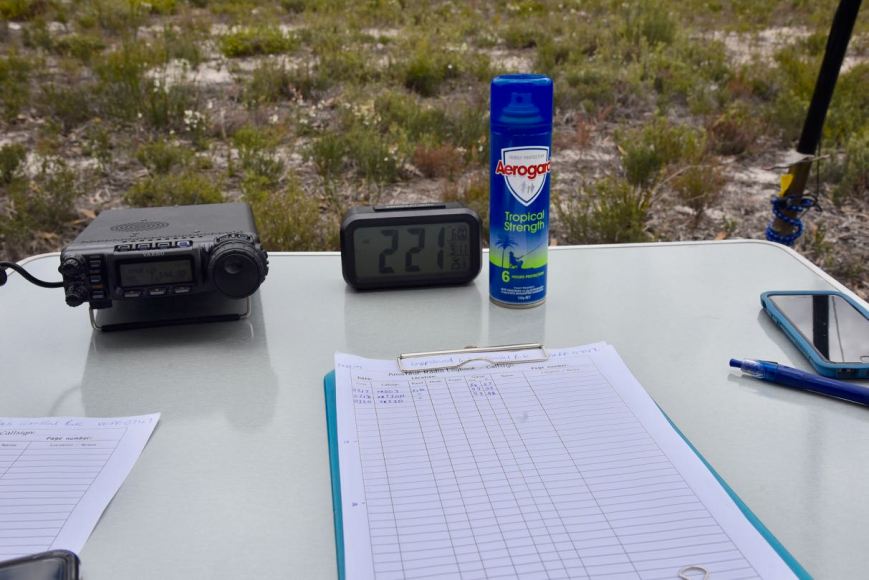
Despite the band conditions on 40m being average, within 90 minutes I had contact number 44 in the log, a QSO with Mark VK7MPR. I went on to make a total of 50 QSOs on 40m from VK1, VK2, VK3, VK4, VK5, and VK7. This included a contact with Daryl VK3AWA at nearby Paradise Beach, and Paul VK3SS who lives at Stratford. Paul and I made arrangements to catch up the following day on our way through to Orbost.
I then headed to the 80m band and called CQ on 3.610. This was answered by Paul VK3SS who had followed me down from 40m, followed by Peter VK3ZPF, and then Peter VK3PF. A further 3 stations from VK3 & VK7 were logged on 80m.
It was now approaching 3.00 p.m. local time, and Marija and I had one more planned activation for the day, The Lakes National Park. So we packed up and headed off with a total of 69 contacts in the log between the two of us.
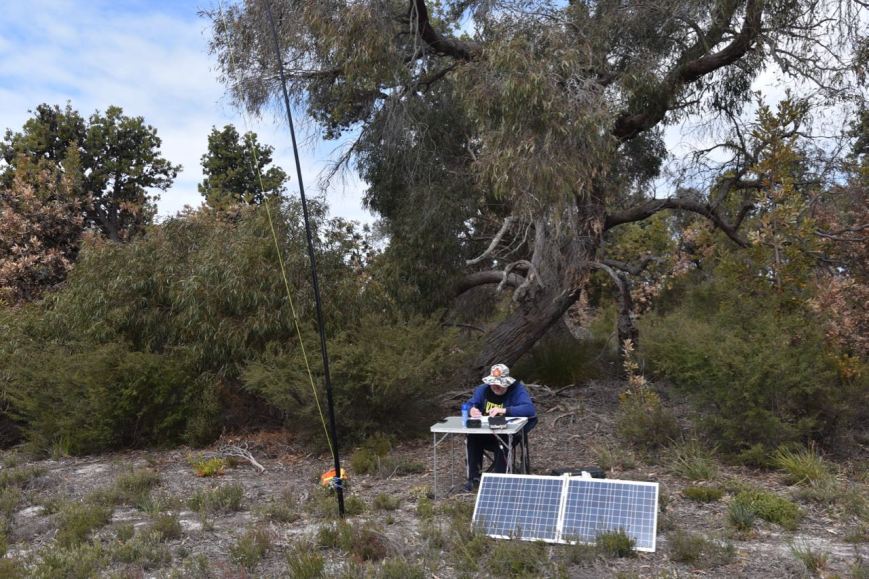
Marija worked the following stations on 40m SSB:-
- VK5GJ
- VK7JON
- VK2IO
- VK2WWV
- VK7FAMP
- VK4TJ
- VK4/AC8WN
- VK4/VE6XT
- VK7LTD
- VK5FMWW
- VK4RF
- VK4HA
- VK7FRJG
I worked the following stations on 40m SSB:-
- VK5GJ
- VK7JON
- VK2IO
- VK2WWV
- VK7FAMP
- VK4TJ
- VK4/AC8WN
- VK4/VE6XT
- VK7LTD
- VK5FMWW
- VK4RF
- VK4HA
- VK7FRJG
- VK2GAZ
- VK3IRS
- VK2AWJ
- VK5BJE
- VK7KT
- VK7MD/m
- VK5HS
- VK3JP
- VK3CA
- VK5KSW
- VK2YA
- VK1WAT
- VK3MDH
- VK5TW
- VK2ZGH
- VK2IPK
- VK3FJAE
- VK2VV
- VK3AXK
- VK2QH
- VK7GG
- VK2TM
- VK7FGRA
- VK3ARH
- VK4VXX/2
- VK2VW
- VK3AWA
- VK2GJC
- VK7HCK
- VK3SS
- VK7MPR
- VK3GGG
- VK3PMG
- VK2FANT
- VK3OHM
- VK3ZPF
- VK5KLV
I worked the following stations on 80m SSB:-
- VK3SS
- VK3ZPF
- VK3PF
- VK7MPR
- VK3UH
- VK3SQ
References.
Central Gippsland, 2017, <http://www.centralgippsland.com.au/golden-beach/attractions/item/90-mile-beach-trinculo-shipwreck>, viewed 23rd November 2017
Lakes Entrance, 2017, <https://www.lakesentrance.com/explore/national-parks/item/gippsland-lakes-coastal-park>, viewed 23rd November 2017
Parks Victoria, 2014, ‘Gippsland Lakes Coastal Park Visitor Guide’.
































Hi Paul
Thanks for the contact and your bird shots are great.
Cheers
John D
VK5BJE/VK5PF
Hi John,
The cruise on the Thompson River out of Sale was a real treat.
The kingfishers were pretty difficult to photograph. Very difficult to get close to them in the boat. They fly about 40 metres and then prop on a branch for a short time and then they are off again.
73,
Paul VK5PAS.
Great birdlife photos Paul.
Chris
VK5FR/VK4FR